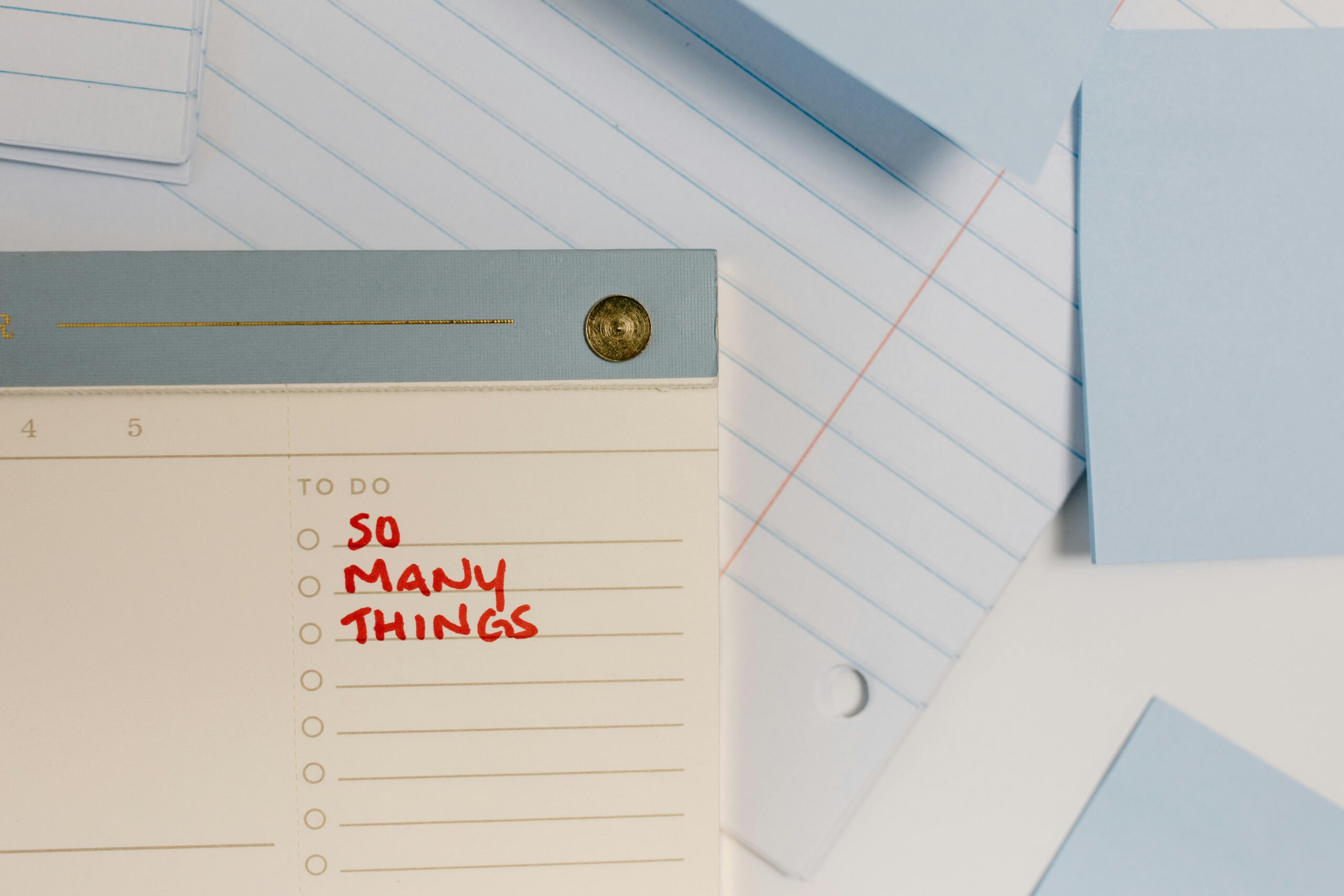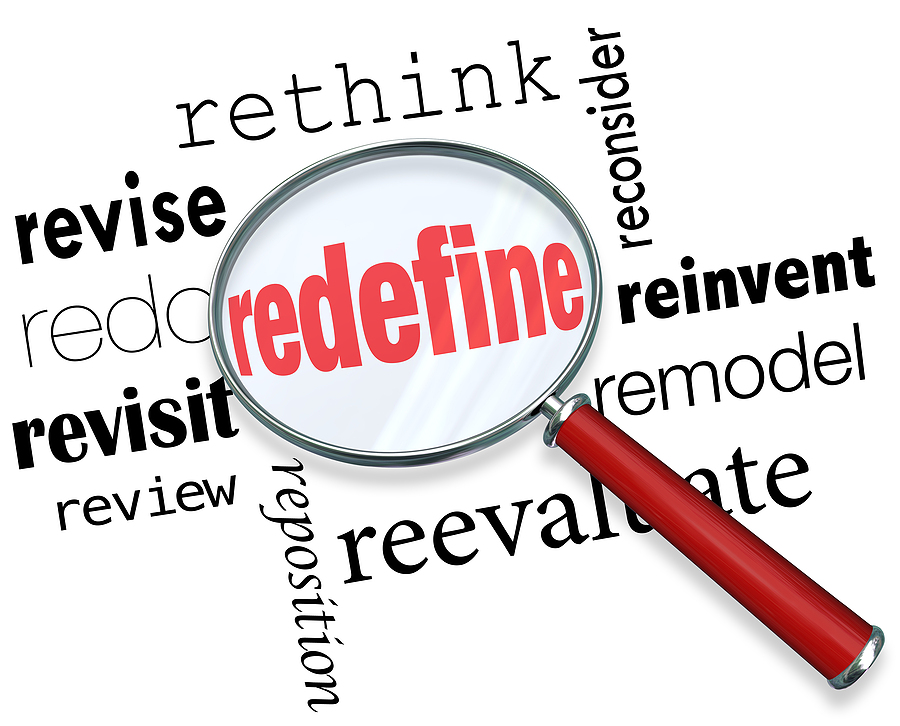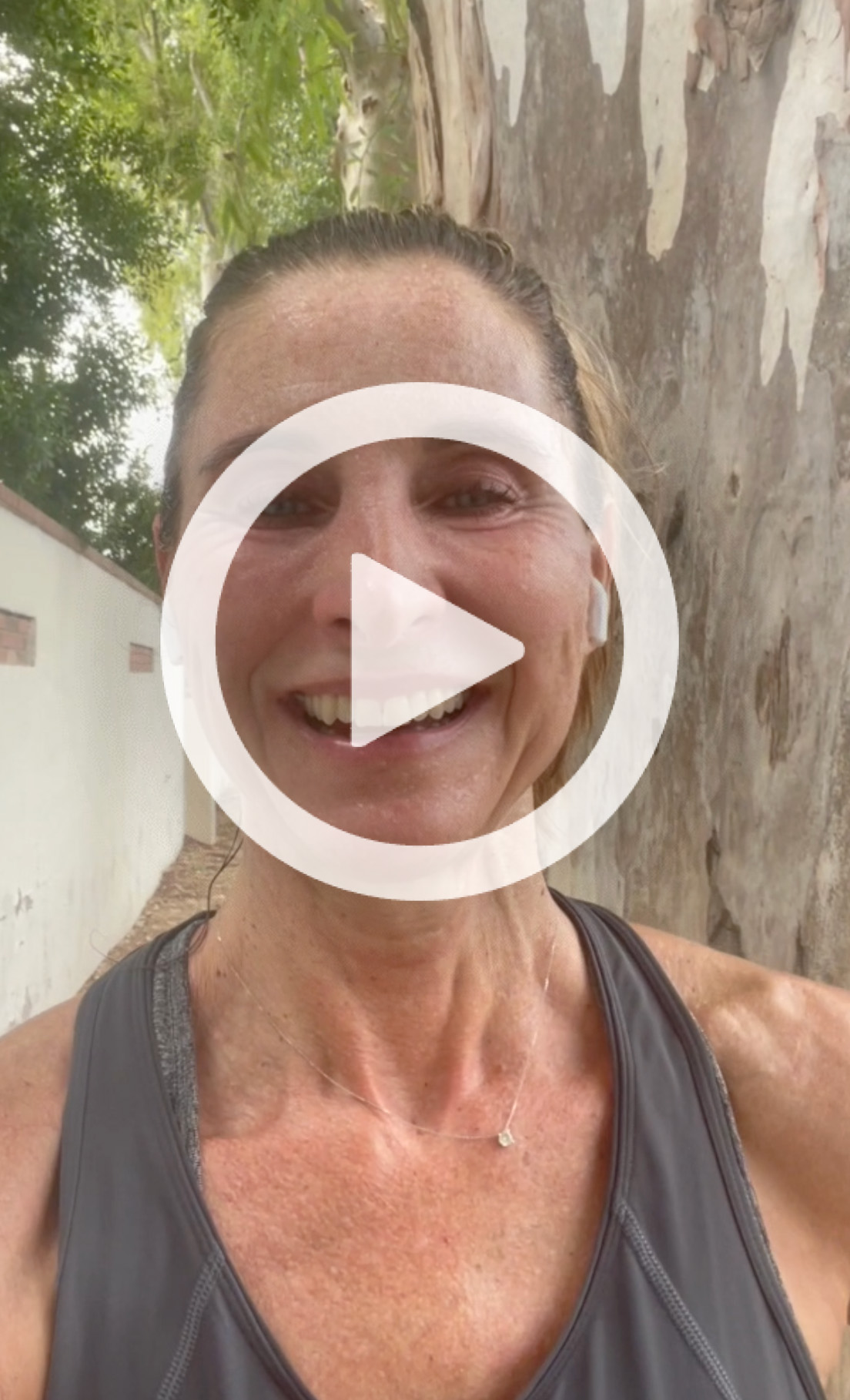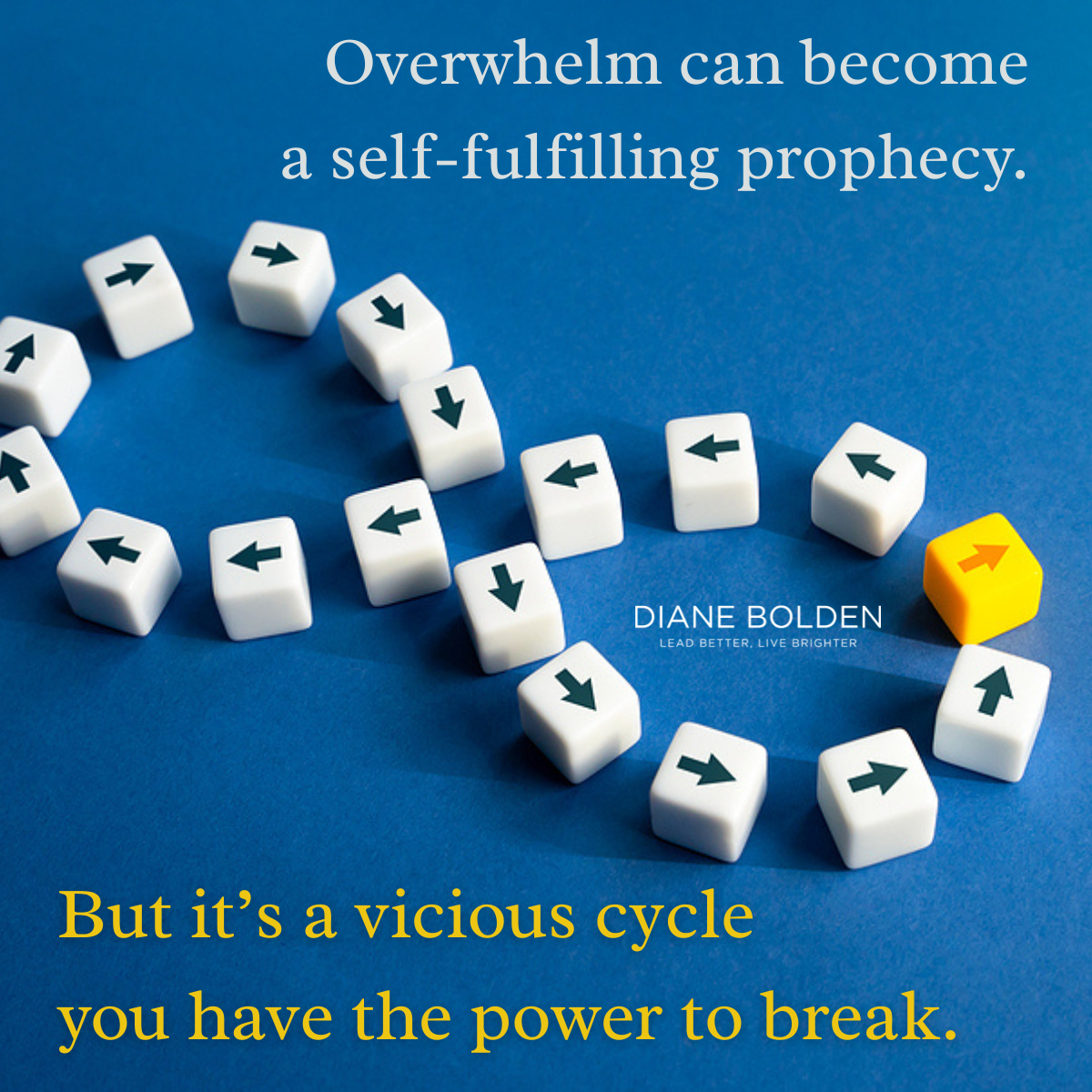Category Archives: Boosting Creativity, Productivity & Effectiveness
Do it because you LOVE it
This week’s video was recorded in the spur of the moment – when I was hit with an epiphany about what allows people to be both successful AND happy. It felt worth sharing, despite the background noise and absolute lack of makeup.
When you click on the image below, you’ll be taken to my LinkedIn page, where the video is posted.
While you’re there, connect with me if you haven’t already. It would be wonderful to have you as part of my professional network.
Here’s to happiness and success – and doing what you love because you love it!
Diane
Why overwhelm can become a self-fulfilling prophecy – and how to break the vicious cycle
When you feel heavy and bogged down, everything you do becomes harder and more cumbersome.
You may think the way you feel is a result of your experiences, and that’s true — the more you have to do, the more overwhelmed you’ll feel. But the reverse also applies — the more overwhelmed you feel, the more you are likely to act in ways that exacerbate it. You might procrastinate, overcomplicate things, or waste energy resisting and worrying.
If you focus on evidence suggesting you’ll never rise above the way you are feeling, you’ll trap yourself in vicious circles where you’ll continue to see what you want to rise above and feel the frustration of being unable to break free.
In fact, your frame of mind with everything you do has a direct effect on whether the experience of doing it will be exhilarating and satisfying or frustrating and heavy.
The stories we tell ourselves have a way of coming true. The way out of self-imposed traps is to start not with our experiences, but our thoughts.
The fundamental shift must come not in what you do, or even how you do it, but what you are thinking, believing and allowing yourself to feel about what you are doing.
To that end, setting an intention or statement of your desired experience can be very powerful. If you want greater freedom and joy, more meaning and satisfaction, and heightened effectiveness, you must align your thoughts around enjoying those experiences before you even start.
And you need to become diligently aware of the degree to which your thoughts stay aligned with your overarching intention. When they drift, you can return to them, remember what you really want, and align yourself with the state you wish to be in again.
In this way, you can break the vicious cycle of allowing your experiences to bring you down in ways that result in more lousy experiences — and begin anew. Your actions align with your thoughts, and you’ll find yourself coming up with creative ways to simplify, get focused on what is most important, and get it done while enjoying yourself in the process – and sharing your joy with everyone around you.
Looking for a better way to lighten your load? Check out UnleashtheExtraordinary.com.
Here’s to your success!
Diane
Feel like something’s got to give?
If you’re near your wit’s end, running yourself ragged, or just feeling overwhelmed, you’re primed to make powerful change – one that not only helps you, but ALL of us to find a better way of both living and leading. This video will point the way forward.
If you’re ready to blaze a new trail, visit UnleashtheExtraordinary.com.
Here’s to your success!
How one exec moved beyond his limiting belief (and what happened next)
Curious to hear an example of how limiting beliefs can be identified and overcome? Here’s a story about a client I worked with years ago who successfully eliminated a self-imposed obstacle he didn’t even know he had created.
If you’re ready to get out of your own way, visit UnleashtheExtraordinary.com.
Here’s to your success!
Could you be in your own way?
What if your most formidable obstacles are between your ears? This week’s video will help you overcome them.
For more on how to get out of your own way (and lead others to do the same), check out UnleashtheExtraordinary.com.
Here’s to your success!
Diane
Want to do more? Start by doing less.
Want to Do More? Start by Doing Less
We are a goal driven society that is conditioned to seek more.
 Our egos desire more money, more fame and prestige, and more stuff. But a deeper part of ourselves longs for more peace, more meaning, and more purpose in our lives. We want to move beyond our previous realizations of what we’ve already accomplished to master newer, better ways of doing things – whether that be what we create in our lives or in our organizations – and as leaders what we can inspire others to do as well.
Our egos desire more money, more fame and prestige, and more stuff. But a deeper part of ourselves longs for more peace, more meaning, and more purpose in our lives. We want to move beyond our previous realizations of what we’ve already accomplished to master newer, better ways of doing things – whether that be what we create in our lives or in our organizations – and as leaders what we can inspire others to do as well.
What if you started with less instead of more?
Just for a moment, consider what you need to let go of to create the space for something new to come in.
You can take your cues from nature. We are officially in the first week of fall – a time of letting go and preparing for regeneration. Trees shed their leaves, and the energy of plants is directed toward developing a strong root system that’ll help it make it through the winter.
As the days will grow shorter and we spend more time in the dark, it’s fitting to reflect on things you may not be able to see but feel welling up within you.
What are you holding onto that has run its course?
- What are the old, outmoded ways of doing things that no longer bring you energy?
- What things have you acquired that you no longer need?
- What beliefs are you holding onto that are no longer true for you?
In moments that you feel constricted, anxious, or tired ask what you can let go of. Don’t be afraid of the answer. Though it may be uncomfortable because it introduces an element of the unknown, following these insights will always lead to freedom and liberation.
Your computer can only handle so much data, and the same is true of you.
If you don’t delete old emails and files and continue to add new programs without uninstalling old ones, you’ll find that it becomes sluggish and unresponsive. Just as freeing up space allows your computer to process things more quickly, so too will clearing your own personal space (whether of things or thoughts) allow you to access new levels of clarity and creativity.
Space brings freedom.
You’ll breathe easier, be more present in every action and interaction you partake of and bring more of who you really are to what you do. And you’ll open the space of possibility that allows something to come in that may surprise and delight you.
Any work you do on yourself will serve as a form of leadership for others who, like you, seek their own answers and could benefit from your example of unearthing what is possible and allowing it to take form in new and unexpected ways.
Discerning what is and isn’t working and up leveling your game becomes easier and more fun when you have support. When you are ready to go deeper, check out UnleashtheExtraordinary.com.
Do you believe it’s possible?
The video below is a follow up to Tuesday’s video about a conversation that had me second guessing something I was passionate about – and why I now know that it was (and always will be) a truth that has the power to transform the way we work and live.
For more on work/life transformation, visit UnleashtheExtraordinary.com.
Here’s to your success!
Diane
How to Leverage a Cringe Worthy Moment
A step backward (even a cringe worthy moment) can be used to propel you forward – IF you know how to leverage it. This week’s video will show you how…
Here’s to your success!
Diane
How to Change a Habit That is Hurting You – Recap and Next Steps
 Growth is often preceded by discomfort – when it becomes apparent that a change is needed… one that you have the power to make. Yes, there are five steps, but the process is nonlinear and iterative, meaning you can jump in anywhere.
Growth is often preceded by discomfort – when it becomes apparent that a change is needed… one that you have the power to make. Yes, there are five steps, but the process is nonlinear and iterative, meaning you can jump in anywhere.
Here’s a review of the five steps I’ve posted about over the last few weeks:
(1) Make a decision, a declaration and a commitment to yourself.
(2) Surround yourself with reminders of what you are moving toward.
(3) Notice how often you engage in the undesired behavior and what the impact is when you do.
(4) Examine and challenge your assumptions.
(5) Envision and practice a new way of doing things.
Sometimes you’ll be at step three for a while, noticing how often you’re falling into old patterns (and experiencing the pain of them) before you’re ready to move to step one, making a commitment to change.
Sometimes steps happen simultaneously - like when you reflect on your behavior (step three) and envision what you could do differently next time (step five).
And often when you begin figuring out what new habit you’d like to replace your old one with (step five), you begin to become aware of limiting assumptions you can challenge (step four).
This non-linear, iterative process is something that is fueled by insight.
And insight is developed through reflecting on your experiences with the intention of achieving a better outcome (and process). Whenever you endeavor to make a change, a question is launched into the ethers about what you need to do next. The answers come in the form of insight.
Insights often land when you’re doing something that gets you out of your head, like taking a shower, driving, playing ball with your kid or your dog, listening to music, gardening – whatever allows you to zoom out and allow your mind to do what it will.
Most executives are so busy running from one thing to another that they overlook the importance of slowing down and creating space for these insights to land. They often unintentionally perpetuate patterns of behavior keep them from the very results they’re working so hard to create.
You can interrupt that vicious cycle and accelerate your progress by working with a coach.
Engaging in executive coaching will not only help you get clear on your desired results and create a path to achieve them but also assist you in identifying and removing obstacles you may not even be aware of. The process of coaching helps you stay accountable to yourself while being supported through change that can be uncomfortable.
Coaching can take place via a one-on-one engagement and can be enhanced with curriculum-based programs that introduce you to tools and approaches that will expedite your process. If you’re interested in exploring what form of support would be the best fit for you, message me.
Here’s to your continued success!
Diane
How to Change a Habit That is Hurting You, Part 5
You’re committed to making a change, focused on what you’re moving toward, aware of the impact of your current behavior, and challenging the assumptions that have been driving you to it.
But there’s one last step that is crucial to your success.
Envision and practice a new way of doing things.
It is essential to substitute a new behavior for the old one so you can focus more on what you are moving toward than away from.
Chances are you already know what you’d like to do as an alternative. If not, you can ask yourself the question, “What would be a better way of handling situations that have been causing me trouble?”
When you ask a question, your subconscious mind gets busy finding the answer for you.
You may learn by watching or seeking mentoring from people around you who are masterful in the areas you strive to improve in. You may find yourself drawn to articles, books, workshops or other resources that will help you. You might journal about it and find yourself writing about the answer.
Once you have an idea of what you’d like to do differently, it’s important to practice as often as you can, both physically and mentally.
As Ralph Waldo Emerson once said, “An ounce of action is worth a ton of theory.”
Action is how you bridge the gap between the future you envision and the state you find yourself in now. But you don’t have to wait until you have all the answers or the confidence of a master to begin. Any action that serves your goal will start building momentum and allow you to learn and make essential adjustments along the way.
Remember to be patient and kind with yourself as you learn a new behavior.
It will probably be somewhat uncomfortable or, at the very least, unnatural at first. You’ll likely not be very good at it right away. And you may find it tempting to simply revert to your old behavior as a result.
But stick with it. Since discomfort accompanies growth, it is an indicator of progress.
With consistent practice, it will get easier and come more naturally, until finally the new behavior is so ingrained that you won’t have to think about it all that much.
If an action doesn’t bring the desired result, you can ask yourself what you could have done differently. Use the experience as data to fine-tune your approach to be more aligned with your desired results.
The steps I’ve been sharing with you over these last few days are a small part of what I teach and coach executives to implement in The Pinocchio Principle Unleashed, a thirteen-week, seven-module virtual leadership development program designed to help business professionals like you maximize your performance, minimize stress and pressure and enjoy a more fulfilling life both on and off the job (and lead others to do the same). Message me for more information if you are interested.




